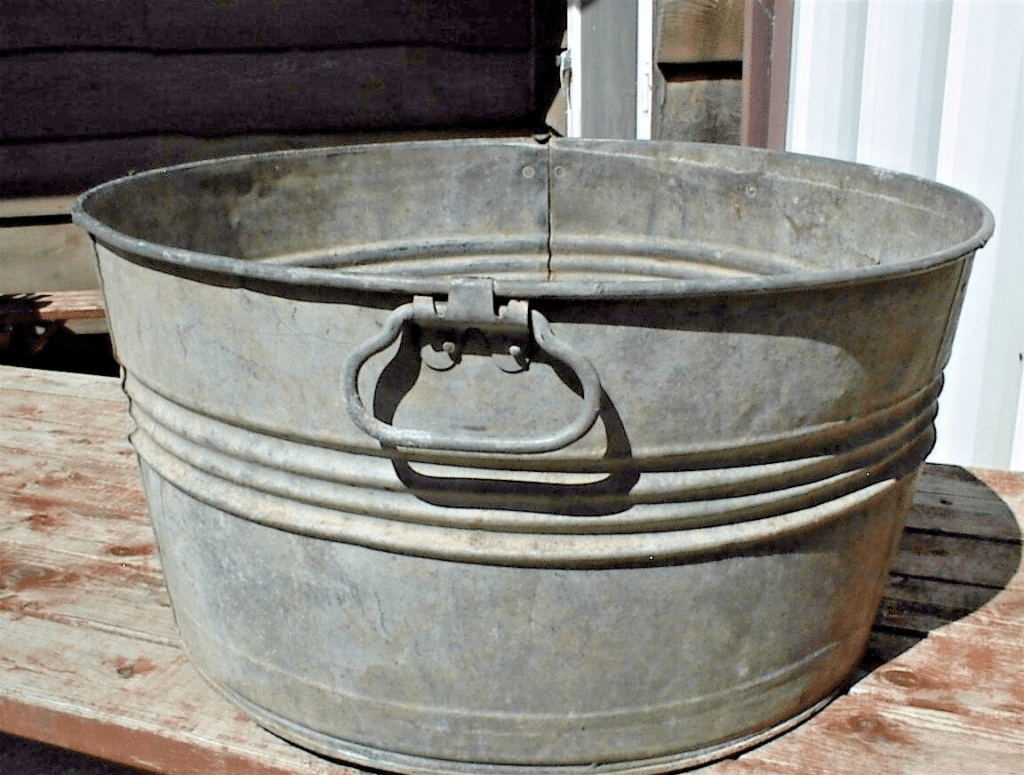The humble galvanized wash tub holds a significant place in the lives of displaced families who migrated to Australia after World War II. These unassuming yet indispensable household items were more than just tools for washing—they were lifelines, symbols of resilience, and a testament to the enduring spirit of those who sought a new life in foreign lands. In this article, we explore the history, utility, and cultural significance of the galvanized wash tub, focusing on the experiences of the Pierzak family and others like them.

Galvanized Wash Tubs: Essential Tools for Everyday Life
A Simple Yet Multifunctional Design
Galvanized wash tubs, typically made from steel coated with zinc to prevent rust, were lightweight, durable, and versatile. These tubs were used for various purposes, including washing clothes, bathing children, and even as makeshift bathtubs for adults. Their robust construction made them ideal for the challenging conditions many displaced families faced during their migration and resettlement.
A Universal Household Necessity
Before the advent of modern appliances, galvanized wash tubs were essential in homes worldwide. For migrants, these tubs served as a critical resource, especially in the austere living conditions of post-war camps and temporary accommodations.
The Journey of the Pierzak Family and Their Tub
From Poland to Germany: A Story of Survival
Stanislaw and Teodozja Pierzak, natives of Poland, were taken as slave laborers by the German Army during World War II. Their forced labor on farms was grueling, and survival required immense resilience. Even under dire circumstances, practical tools like the wash tub became indispensable for daily tasks.
Life in Displaced Persons Camps
After the war, the Pierzak family lived in camps organized by the United States Army in Bavaria, Germany. These camps provided temporary refuge for millions of displaced persons. In these settings, the wash tub played a vital role, aiding in hygiene and laundry while families awaited resettlement opportunities.
Migration to Australia
In 1950, the Pierzak family boarded the ship General M. B. Stewart in Naples, Italy, and arrived in Sydney, Australia. Like many migrant families, they carried their wash tub as part of their limited luggage. The tub accompanied them through various migrant camps in New South Wales, including Bathurst, Orange, and Parkes, serving as a constant in their transient lives.
The Role of Galvanized Wash Tubs in Migrant Camps
A Tool for Survival in Temporary Shelters
The harsh realities of migrant camps required resourcefulness. With limited access to modern amenities, galvanized wash tubs were used not only for laundry but also for personal hygiene. They became central to maintaining cleanliness and dignity during a challenging transition period.

A Symbol of Home in Uncertain Times
For many families, the wash tub symbolized stability and familiarity. Amid the uncertainty of displacement, it was a reminder of normalcy and a practical tool for creating a semblance of home.
Adapting to Life in Australia
Early Settlements and Makeshift Living Conditions
The Pierzak family, like many others, initially lived in makeshift accommodations such as garages and bungalows in North Sunshine, Victoria. Without built-in laundries or bathrooms, the galvanized wash tub remained a critical household item.
Aiding in the Path to Stability
As the Pierzaks worked tirelessly to build a better life, the wash tub continued to serve its purpose. It was part of daily routines, from cleaning clothes to bathing children, bridging the gap until they could afford more permanent housing with modern facilities.
Cultural and Historical Significance
A Connection to the Past
Galvanized wash tubs are tangible links to the experiences of displaced families who rebuilt their lives after the war. These items speak volumes about the resourcefulness and resilience of migrants who navigated immense challenges to create a future for themselves and their descendants.
A Symbol of Migration and Survival
The Pierzak family’s tub, now preserved as a historical artifact, represents the broader narrative of post-war migration. It highlights the struggles, sacrifices, and triumphs of countless families who chose to start anew in Australia.

Preserving a Legacy
Artifacts like the galvanized wash tub remind us of the importance of preserving and sharing stories of migration. They offer future generations insights into the resilience and strength of those who came before them.
The Enduring Relevance of the Galvanized Wash Tub
Even in today’s world of advanced appliances and conveniences, the story of the galvanized wash tub resonates deeply. It reminds us of a time when simple tools were vital to survival and when families relied on practicality and ingenuity to navigate life’s challenges.
Conclusion: More Than a Household Item
The galvanized wash tub is much more than a utilitarian object; it is a vessel of history, resilience, and cultural significance. For families like the Pierzaks, it symbolized perseverance and adaptability in the face of adversity. As we reflect on its role in post-war migration, we honor the stories of those who carried these tubs across oceans and continents, using them to forge a better life for themselves and future generations.


